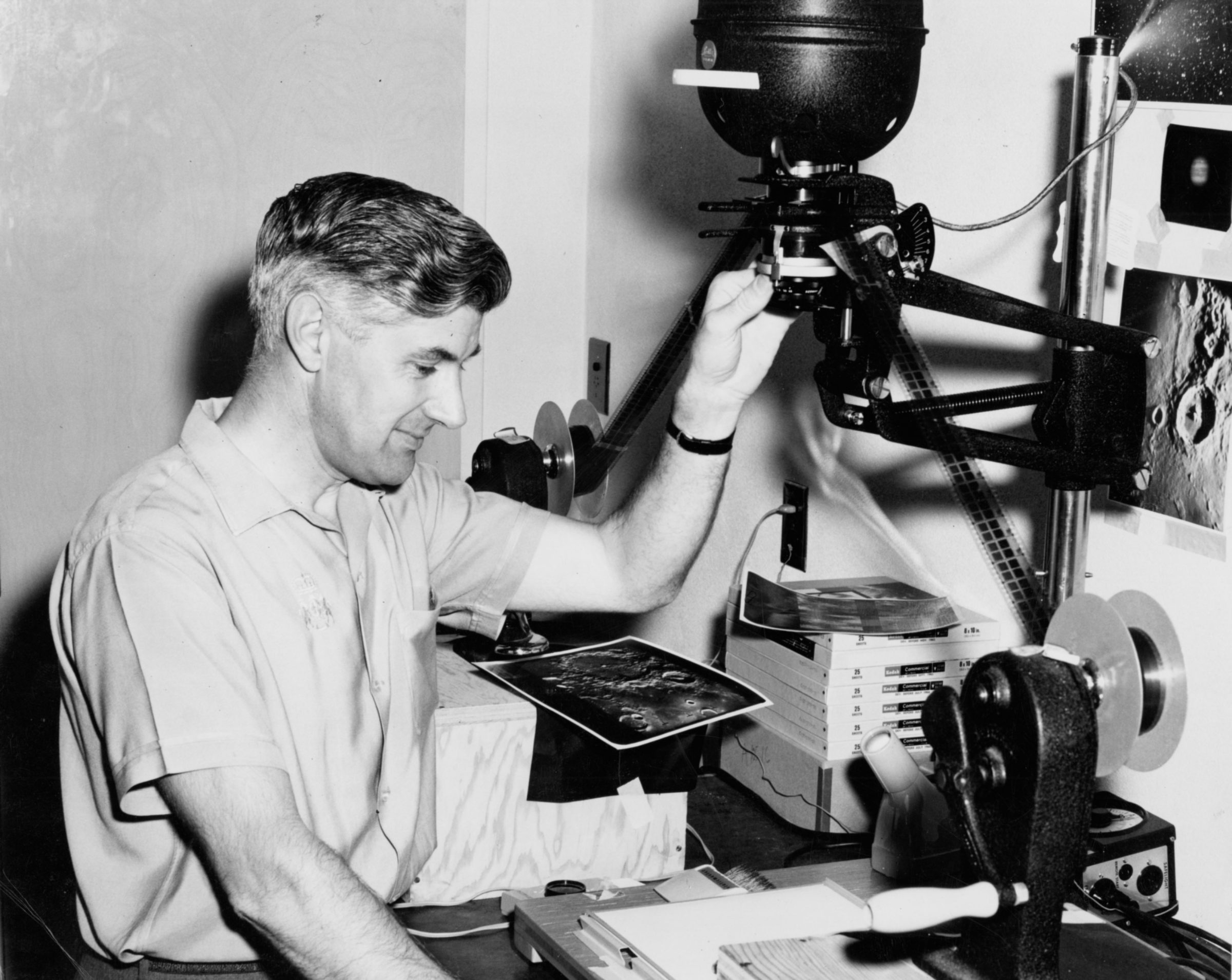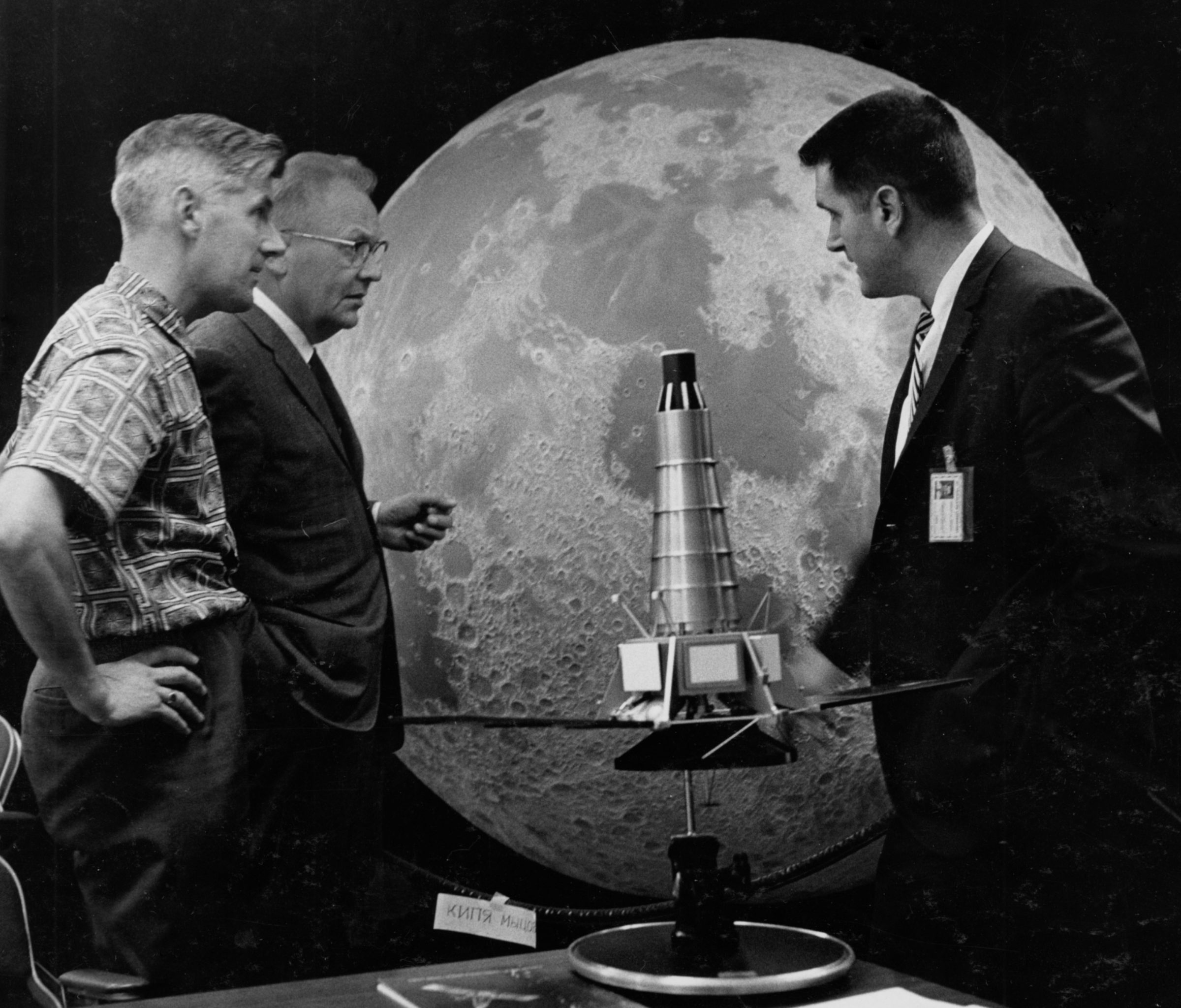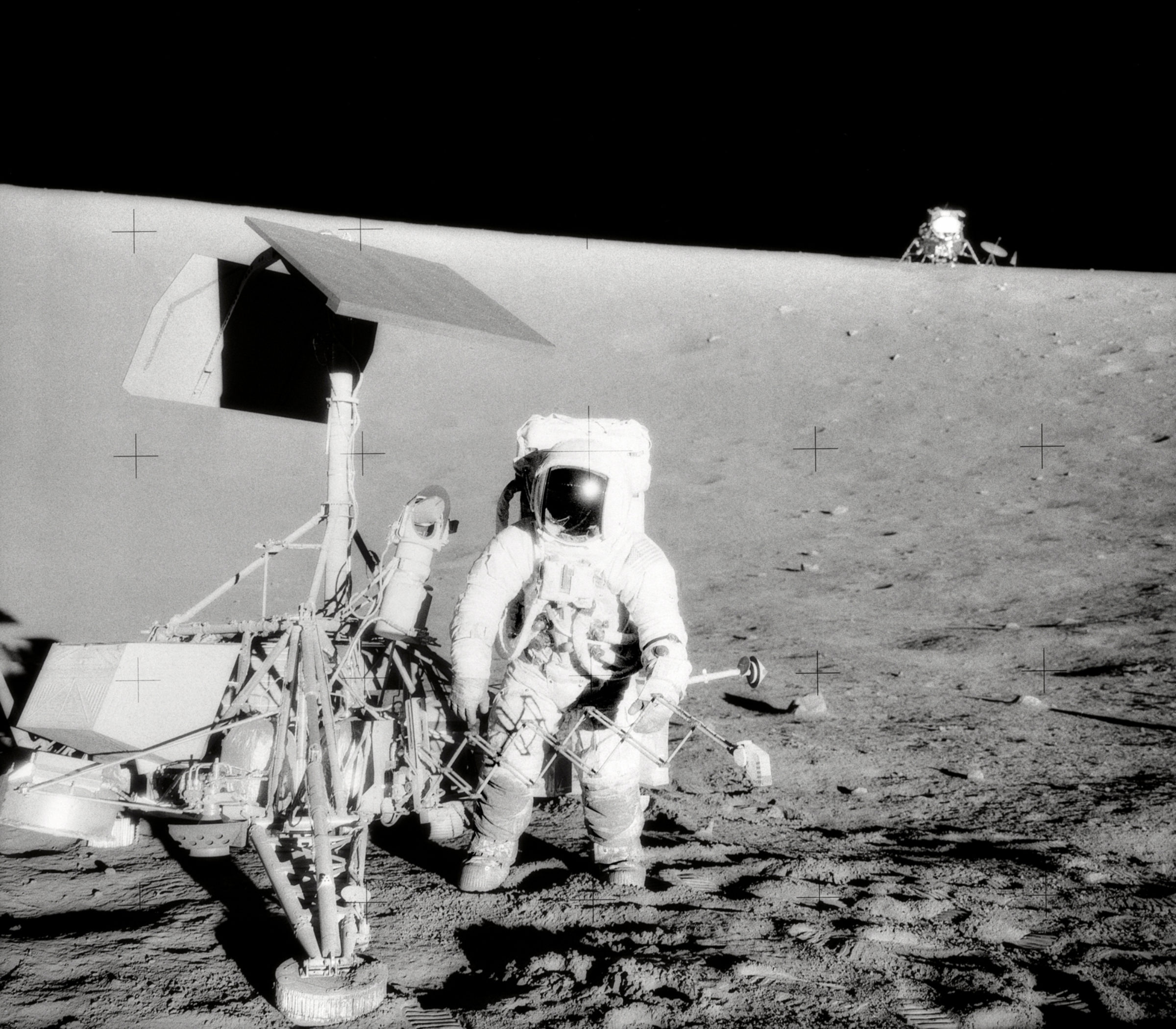Jason Davis • Oct 21, 2016
Remembering Ewen Whitaker, the "careful and caring" scientist who found Surveyors 1 and 3
Ewen Whitaker, a lunar expert whose work contributed to the origins of modern planetary science, passed away last week here in Tucson, Arizona. He was 94.

I had the privilege of getting to know Whitaker while creating Desert Moon, a 30-minute documentary about the history of astronomer Gerard Kuiper, the University of Arizona Lunar and Planetary Laboratory and the dawn of planetary science. Whitaker was a key part of that story.
After a fateful encounter with Kuiper in 1955, Whitaker helped create the Photographic Lunar Atlas, which was at the time the most comprehensive lunar image set ever published. Later, he participated in NASA robotic spacecraft missions that were sent to the moon ahead of the Apollo astronauts, including Ranger, a series of crash-landing probes that returned the first up-close pictures of the surface.
Whitaker was a kind, charming man with a disarming sense of British humor, and he seemed to be universally beloved by his colleagues. The casual, humble way in which he spoke about past events was heartwarming; most of Desert Moon's laugh lines come from Whitaker.
For instance, in 1960, when Kuiper's fledgling Lunar and Planetary Lab was already at the forefront of lunar research, NASA asked the Air Force for an atlas with a coordinate grid that could be used to select potential astronaut landing sites. The Air Force, in turn, asked Kuiper for help, and Whitaker recalled the lunar lab's interest in the opportunity—and the funding it might provide—like this:
"A delegation of three or four from [the Air Force] came out and said, 'Hey, NASA wants us to help map the moon. Can you help us at all?' So we said, 'Oh-ho-ho!'"
Whitaker also had the grit and determination necessary to get through some of America's early space program setbacks. After the sixth Ranger spacecraft attempt failed in 1964, NASA geared up for yet another try. Whitaker simply recalled his mentality as, "Okay, same old thing, let's do it again."

Born in London in 1922, he was interested in astronomy from an early age. He had hoped to attend the University of London, but during World War II, many universities were relocated to the countryside for protection, and Whitaker stayed close to home to help support his ailing mother. He found a job with Seimens, where he worked on a secret project to pump fuel across the English Channel to Allied forces in France. The project, coincidentally enough, was called PLUTO: PipeLines Under The Ocean.
At Seimens, Whitaker checked the quality of pipeline samples using spectroscopy. He was happy to learn the technique, he told me, because, "Whooo—they use spectroscopy [to study] stars, don't they?"
After the war, he landed a job at the Royal Observatory Greenwich, where he found he there was ample telescope time available on nights when the moon was up.
"'That darn moon puts a light up in the sky at night so we can’t take long exposure pictures of our faint galaxies'—This was the general thought at the time," he said. "The moon was just a dead lump of rock that everyone knows about."
At the time, the International Astronomical Union's official moon map, published in 1935, was hand-drawn. Whitaker began updating it in his spare time, and in 1955, he met Gerard Kuiper at an IAU conference in Dublin, Ireland. At one session, Kuiper announced he was seeking feedback for a project to create a photographic lunar altas. Out of all the attendees at the conference, Whitaker was the only person to write Kuiper and express interest.
The two struck up what Whitaker deemed a "lively correspondence," in which Whitaker—bearing no academic degrees—politely but confidently explained to Kuiper—a leading astronomer—how the atlas might be improved. Kuiper valued the input, and the Whitaker family moved to America in 1958 to join Kuiper at the University of Chicago's Yerkes Observatory. Two years later, the team relocated to Tucson to found the University of Arizona Lunar and Planetary Laboratory, one of the world's first research institutions dedicated to planetary science.
During the 1960s, the Lunar and Planetary Laboratory went on to publish three more lunar atlases, the latter of which was created using a large, NASA-funded telescope in the Santa Catalina Mountains. Today, the lab continues to be at the forefront of planetary exploration; science operations for the HiRISE camera and OSIRIS-REx, for instance, are carried out here.
And it all started with a small handful of scientists that included Whitaker.
After the landing of Surveyor 1 in 1966, panoramic surface photographs were matched with Lunar Orbiter imagery to pinpoint the lander's location. Whitaker didn't agree with the results, and decided to perform his own analysis—"a little more carefully, probably," he said. He came up with an alternate set of coordinates and published them in Science, and NASA, in Whitaker's words, decided, "Oh. I think he's right."
When Surveyor 3 landed in 1967, NASA sought out Whitaker's help directly: "You're the guy who found Surveyor 1—you can find Surveyor 3. Please?" After 23 hours of work, he succeeded.
During Apollo 11's descent, Neil Armstrong famously altered the lunar module's trajectory at the last minute to avoid a field of boulders. Before NASA could visit more ambitious sites in subsuquent Apollo missions, engineers and managers still wanted to demonstrate a bulls-eye landing. The agency needed a known location on the surface to use as a target, and thanks to Whitaker, they had one: Surveyor 3.
Apollo 12 landed near Surveyor 3 in late 1969. Upon seeing the spacecraft during their first moonwalk, astronauts Pete Conrad and Alan Bean were overjoyed:
Conrad: Boy, you'll never believe it. Guess what I see sitting on the side of the crater?
Bean: The old Surveyor, right?
Conrad: The old Surveyor; yes sir! (laughs) Does that look neat? It can't be any further than 600 feet from here!
Later, Conrad and Bean elaborated on why they were so excited:
Conrad: So I was really happy when I found it in the crater, because now, not only did I know that we were in the right place, but also that they had known where the Surveyor was.
Bean: That's right. Because I remember, that was one of the questions. Is it really going to be there? Of course, you knew you were at the right place.
Conrad: We would have been pissed if it hadn't.
Bean: So would the program, really. Because that's all the reporters would want to talk about when you got back to Earth. 'Why didn't you find it? Why has NASA screwed up?'
Years later, Whitaker and Bean were able to catch up and reminisce about the mission. Bean signed a copy of his book, "Apollo: An Eyewitness Account By Astronaut/Explorer Artist/Moonwalker Alan Bean," for Whitaker. He added a note that ends with two adjectives that I think describe Whitaker pretty well:
"Ewen, thanks for your unique work in finding the precise location of the Surveyor 3 spacecraft. Our primary mission objective would have been a failure if you had not been so careful and caring."

Support our core enterprises
Your support powers our mission to explore worlds, find life, and defend Earth. You make all the difference when you make a gift. Give today!
Donate

 Explore Worlds
Explore Worlds Find Life
Find Life Defend Earth
Defend Earth

